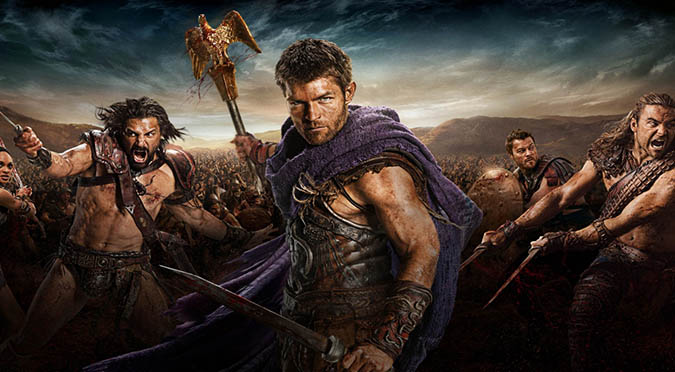
SPARTACUS
May 16, 2018
“EPIC FAILS” Book Tour – with Ben Thompson and Erik Slader!
June 15, 2018CONTENT WARNING: this article contains mild language, crude humor, alcohol, and Vikings!
The Viking Age: 793-1066

“Like a thunderbolt from heaven.” – Patriarch Photios (describing a Swedish Viking attack on Constantinople)
The Vikings were many things, savage but cultured, incredibly superstitious yet centuries ahead of their time. They were seafarers who explored further than anyone had gone before. They were also violent warriors who raided villages and brutally attacked innocent civilians without mercy. The term ‘Viking’ may have come from an Old Norse word meaning raider or pirate, but today it’s often used to describe the Scandinavian peoples of the Medieval Period, primarily from Norway, Denmark, Sweden, and Finland.

They also didn’t wear horned helmets…
The Viking Age truly began on June 8th, in the year 793, when a monastery of Christian monks (minding their own business, working on illuminated manuscripts) spotted dragon-shaped long boats off the shores of Lindisfarne, a small island off the coast of England. A small band of Vikings terrorized the monks, pillaged the holy sanctuary of its gold and burned the abbey to the ground, before sailing off.
Throughout the Dark Ages, Vikings raided their way across Europe, as far as Asia and even North America. Eventually, the Vikings got tired of invading England every other year, so decided to settle down and just take it over. The Viking Age came to an end with the rise of William the Conqueror in 1066, but between all that there’s tons of crazy stories about these mead-drinking, axe-wielding berserkers. Unfortunately, there’s still a lot we don’t know about the Vikings, because for all their ingenuity, they never thought to write anything down…

Instead, we only have a handful of sagas (passed down like a centuries long game of telephone), along with the writings of the people who hated them, and some random bits of circumstantial evidence to go off of. Most of the stories have been lost to time, and it’s hard to separate the fact from fiction, but here’s what historians have been able to piece together about the history of these Norsemen (and Norse-women).
1. Ragnar Lodbrok (“Hairy Breeches”)

Ragnar Lodbrok (or Lothbrook) is one of the most elusive and intriguing historical figures in Viking lore. We know very little about the man, except that his name means “Shaggy Breeches” (or hairy pants) and he was a Viking chieftain. According to the sagas, he was quite the lady’s man, and once beat the crap out of both a bear and a wolf in order to hook up with his first wife, Lagertha (more on her below).
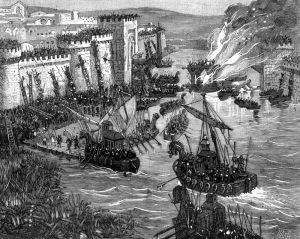 Historians are pretty sure that it was Ragnar who led the Vikings during the Siege of Paris in 845, where a fleet of 120 ships and thousands of warriors kicked the French out of their own city and then (after getting super wasted) ransomed it off to Charles the Bald for 7,000 pounds of silver and gold.
Historians are pretty sure that it was Ragnar who led the Vikings during the Siege of Paris in 845, where a fleet of 120 ships and thousands of warriors kicked the French out of their own city and then (after getting super wasted) ransomed it off to Charles the Bald for 7,000 pounds of silver and gold.
One thing we’re pretty certain of is that Ragnar eventually met his end at the hands of King Ælla of Northumbria, after becoming ship wrecked in England, in 865. King Ælla had Ragnar unceremoniously thrown into a snake pit and left for dead. Ælla would soon come to regret that decision, as Ragnar’s sons raised a massive army, led by Ivar the Boneless and swore revenge! (or at least that’s one version of the story)
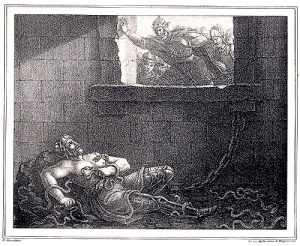
Death by snake pit: it doesn’t really get any more metal than that.
2. Lagertha

As it turns out, women in Viking societies actually had nearly equal footing with men, which was rather rare in other medieval civilizations. According to the sagas, Lagertha may have been the wife of Ragnar Lodbrok, but she was also a formidable warrior in her own right.
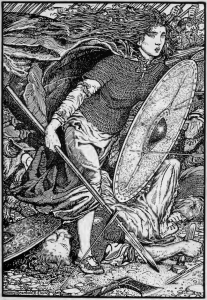 She was a legendary shield maiden, who courageously fought in numerous battles and even saved Ragnar’s life on more than one occasion, according to 12th century, Danish historian, Saxo Grammaticus. After Ragnar divorced her to hook up with this other chick, named Thora Borgarhjört, Lagertha remarried and settled down in Norway.
She was a legendary shield maiden, who courageously fought in numerous battles and even saved Ragnar’s life on more than one occasion, according to 12th century, Danish historian, Saxo Grammaticus. After Ragnar divorced her to hook up with this other chick, named Thora Borgarhjört, Lagertha remarried and settled down in Norway.
One time, when Ragnar was fighting a civil war in Denmark and getting his butt handed to him, Lagertha came to his rescue once again, despite his jerkishness. Upon returning to Norway, Lagertha got into a fight with her (non-Ragnar) husband that ended with her pulling a spearhead out of her gown and stabbing him to death. We’re not exactly sure what the fight was over, but I’m guessing it was probably his fault. She then took the throne for herself and became the sole ruler of Norway.
Moral of the story? Happy wife, happy life.
3. Björn Ironside
Björn Ironside was (allegedly) the son of Ragnar Lodbrok and his third wife, Queen Aslaug. His name literally means ‘Bear of iron’, so he had quite the reputation to live up to. Björn grew up to outshine his father’s legacy, becoming the King of Sweden and a powerful naval commander / bear fighter who became notorious throughout the Mediterranean.

Björn and his brother, Hvitserk, led a Viking raiding party along the coast of Spain, down to Africa and eventually found their way to Italy, in search of the Christian city of Rome. After ransoming a king, capturing the city of Pisa, and getting some wrong directions that took them the opposite way, they found themselves at the walls of the city of Luni (thinking it was Rome).
Björn and his men were unable to breach the city walls, so he decided to sneak his way in. Björn faked his own death and then had a messenger announce that he had been baptized on his deathbed and wanted to be laid to rest with Christian burial rights. The gullible townsfolk took the bait. Once inside the city gates, Björn leapt to his feet as the pallbearers drew their swords. They fought their way through, opened the gates and sacked the town of its riches.
On the voyage back home however, shenanigans ensued when the Vikings were ambushed by a fleet of ships armed with Greek fire. Björn barely escaped, but lost most of his men and loot.

4. Ivar the Boneless
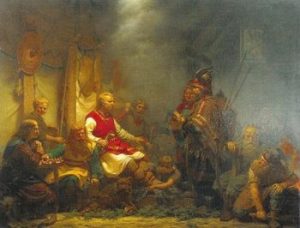
Another son of Ragnar, Ivar the Boneless was a ruthless maniac. He is said to have had some kind of disability that may or may not have had to do with ‘weak bones’, but that didn’t stop him from being one of the most bloodthirsty Vikings of all time. When word of Ragnar’s death reached home, Ivar and his brothers formed one of the largest Viking armies the world had ever seen and sailed for England in retaliation.
It was Ivar himself who led this “Great Heathen Army”, a coalition of Vikings from Denmark, Sweden and Norway, against the four Anglo-Saxon kingdoms of Northumbria, Mercia, East Anglia, and Wessex. According to the legend, Ivar and his brothers captured their father’s murderer, King Ælla, and executed him in one of the most gruesome ways possible: a ritual known as the blood eagle…

“A bit of the old ultra-violence?”
5. Harald Fairhair
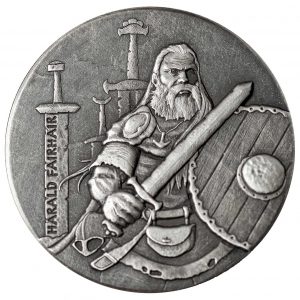
Harald “Fair-hair” may not sound like a badass namesake, until you realize the story behind his long golden locks. Harald was crushing on this girl, Gyda, who happened to be the daughter of a Viking Chieftain. She was way out of his league, but he proposed to her anyway. She turned him down, jokingly saying she wouldn’t marry him until he was the king of all Norway…

Harald swore to not cut or comb his hair until the day he conquered all of Norway. 10 years later, after dozens of bloody battles, and looking like the lead singer in a hair metal band, Harald became the first king of Norway and married Gyda (the first of many ex-Mrs. Fairhairs).
Harald Fairhair ruled from 872 to 930 CE.
6. Erik ‘Bloodaxe’ Haraldsson
Harald Fairhair had at least 20 sons, but the most famous (or infamous) was Erik… Erik Bloodaxe!
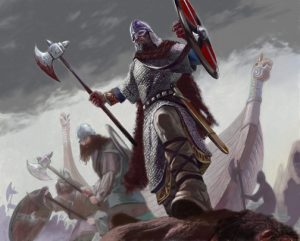
This charming prince took his place as the King of Norway… after murdering nearly all of his half brothers! Erik Bloodaxe was savage, even by Viking standards!
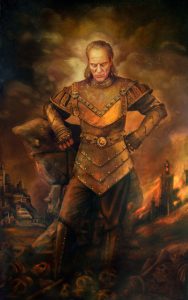
Vigo the Carpathian is unimpressed.
One of his last surviving siblings was Haakon the Good, who their father had sent away to England, to live in the court of King Athelstan. When Haakon was old enough, he returned home to Norway, where he found a country that was completely miserable under his older brother’s tyranny. Haakon challenged Erik for the throne and pretty much everyone had had enough of his crap, so they all sent him packing.
Erik Bloodaxe fled for England, where Athelstan put him in charge of the town of York (the area conquered by Ivar the Boneless) in 947, in an effort to defend against further Viking attacks. But then, another English King, this guy called Eadred, didn’t so much like that, so decided to invade. After some back and forth slaughtering, the people of York also got fed up with Erik’s dicketry. Once again, Erik Bloodaxe found himself out of a job.
This other guy, Olaf, took over York for a few years, but then out of nowhere, Erik returned, bloody axe in hand. Erik managed to drive out Olaf and re-conquered the fiefdom. This time, Erik ruled for two whole years before, you guessed it, he was driven out by his own people in 954.
Erik spent the next few years sailing around the Irish Sea and raiding the Scottish countryside. It is said that he met his demise at the hands of Olaf’s son, Maccus.
7. Gunnhild, Mother of Kings
The daughter of Viking ruler of Denmark, Gorm the Old, sister of Harald Bluetooth, and wife of Erik Bloodaxe, Gunnhild was more evil queen than Disney Princess.

If people didn’t think Erik Bloodaxe was a scary psychopath, they were at the very least afraid of his wife. Gunnhild was considered to be a powerful witch, because those she didn’t like would often disappear. In fact, many of Erik’s brothers met their end by her hand, whether it was a coincidental house fire or random poisoning. Gunnhild and Bloodaxe were kind of the Bonnie and Clyde of medieval history.
When Erik’s brother, Haakon the Good, got them exiled from Norway, Gunnhild vowed to return – with a vengeance! Shortly after the untimely death of her husband, Gunnhild gathered up her kids and sailed to the Orkney Islands, off the coast of Scotland. It was there that she began to plot her revenge. In fact, she spent the next seven years building up an army, hiring mercenaries, and forming political treaties between England and Norway, all to get back at Haakon.

Hell hath no fury like a woman scorned!
When her daughter married a fellow by the name of Thorfinn Skull-Cleaver, Gunnhild used her new position as Skull-Cleaver’s mother-in-law to manipulate alliances between numerous Viking lords from England to Norway, reached out to her brother in Denmark, Harald Bluetooth, and trained her sons for war. In 961, Gunnhild’s son, Harald Greycloak, arrived to meet King Haakon – with a massive armada that outnumbered Haakon’s forces 6 to 1!
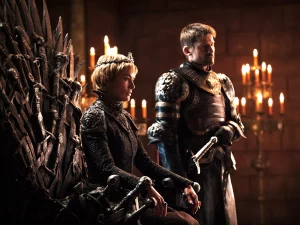
Oddly enough, Haakon’s army won the battle, but during the fight, Haakon himself was stabbed through the arm with an arrow, leaving him mortally wounded. Upon his death, the throne went to Harald Greycloak, who was King in name only. Everyone knew who the real power was… his mom!
Gunnhild, Mother of Kings, ruled Norway for nine years. Eventually though, she was betrayed by her brother (Harald Bluetooth) in 977, who ordered her to be executed by drowning in a bog…
Really, when you get down to it, the Viking Age was basically one long soap opera about an extended family with some serious issues. – Click here for Part Two: 8 More Brutal VIKING Rulers!
Erik Slader
Thanks for reading! If you’re a fan of the blog, be sure to listen to the Epik Fails of History podcast and check out my all new “EPIC FAILS” book series – available now wherever books are sold!


Sources:
“Guts and Glory: The Vikings” by Ben Thompson
National Geographic: Vikings (March 2017)
https://www.history.com/news/history-lists/6-viking-leaders-you-should-know
https://en.wikipedia.org/wiki/Ragnar_Lodbrok
http://military.wikia.com/wiki/Siege_of_Paris_(845)
http://www.englisc-gateway.com/bbs/topic/40632-the-real-lagertha/
http://www.bbc.co.uk/history/ancient/vikings/bloodaxe_01.shtml

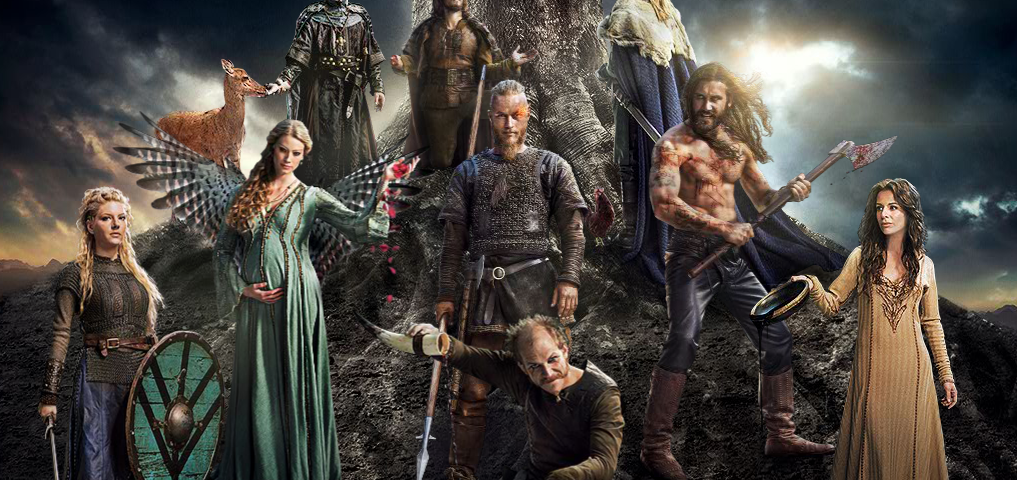
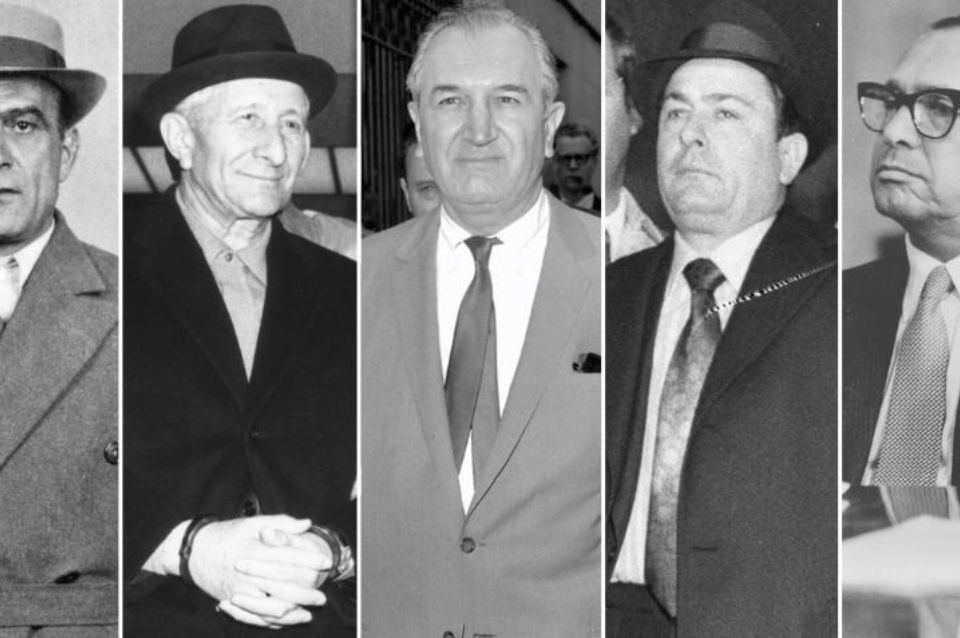

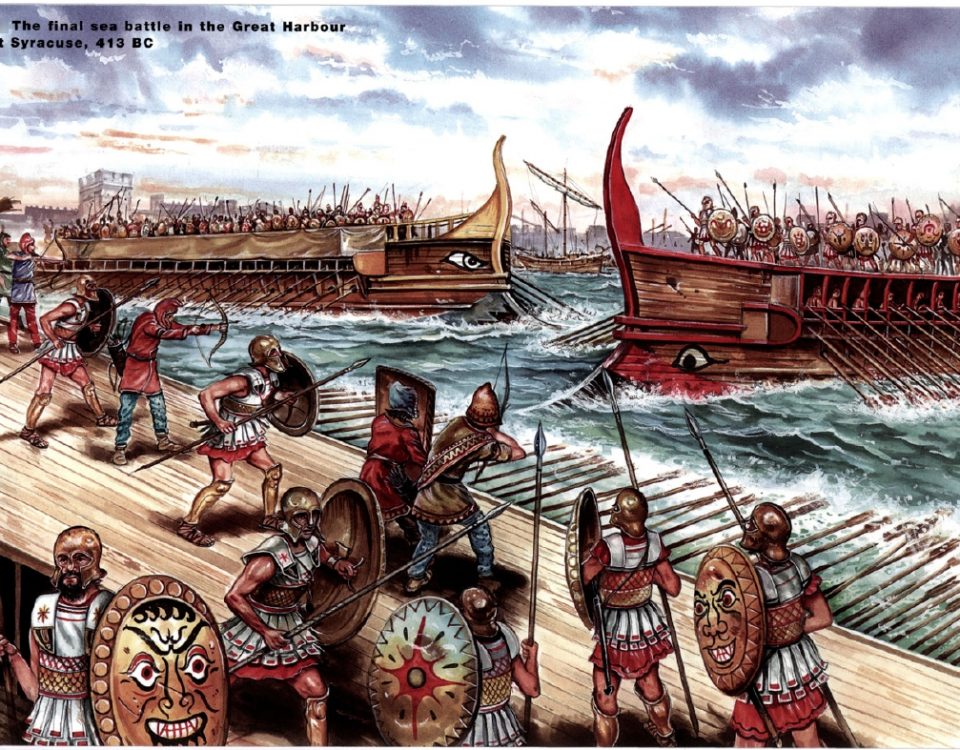
3 Comments
[…] Samurai were said to have lived by a code of honor known as Bushido, ‘The Way of the Warrior’ which was similar to that of the Knight’s code of Chivalry, with a Zen Buddhist twist. The Seven Virtues of Bushido are as follows: Rectitude, Courage, Benevolence, Respect, Honesty, Honour, and Loyalty. Above all else, their goal in life was to die an honorable death, a trait shared by their Nordic counterparts, the Vikings. […]
[…] under mysterious horror movie esque circumstances), half a millennium after Viking Explorer, Leif Erikson stumbled onto the shores of Canada, a few hundred years after Columbus discovered the Bahamas, and […]
[…] in Sparta revolved around warfare, not unlike Viking culture. The difference perhaps is that Vikings had a culture, Spartans on the other hand would rather […]